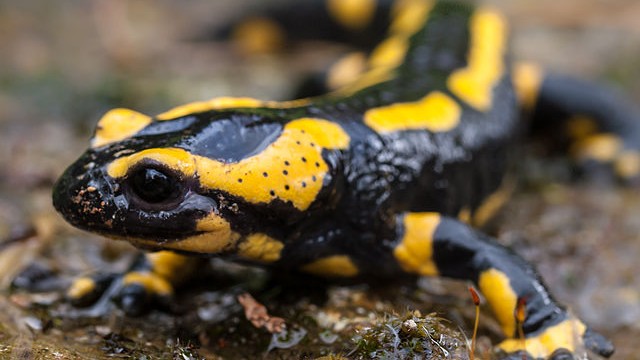
Salamanders threatened by skin-eating fungus
A new species of fungus that eats amphibians’ skin has ravaged the fire salamander population in the Netherlands, bringing it close to regional extinction.
Fire salamanders, recognisable by their distinctive yellow and black skin patterns, have been found dead in the country’s forests since 2010. The population has fallen to around 10 individuals, less than 4% of its original level, but what has been killing them has been a mystery until now.
Scientists from Ghent University, Imperial College London, Vrije Universiteit Brussel and the Dutch conservation group Ravon have isolated a new species of fungus from the dead animals and found that it can rapidly kill fire salamanders. They have named the fungus Batrachochytrium salamandrivorans, the second part meaning “salamander-eating”.
Fungi are increasingly recognised as important threats to biodiversity. A species related to the new fungus, Batrachochytrium dendrobatidis (Bd), has plagued amphibian populations across the globe and is thought to have wiped out more than 200 species worldwide. It causes the disease chytridiomycosis, which the International Union for the Conservation of Nature has called the single most devastating infectious disease in vertebrate animals. The fungus can be passed between salamanders by direct contact and invades the animal’s skin.
The study’s lead author, Professor An Martel from the University of Ghent, said: “In several regions, including Northern Europe, amphibians appeared to be able to co-exist with Bd. It is therefore extremely worrying that a new fungus has emerged that causes mass mortalities in regions where amphibian populations were previously healthy.”
The research was part-funded by the European Research Council and the findings are published in the Proceedings of the National Academy of Sciences.




